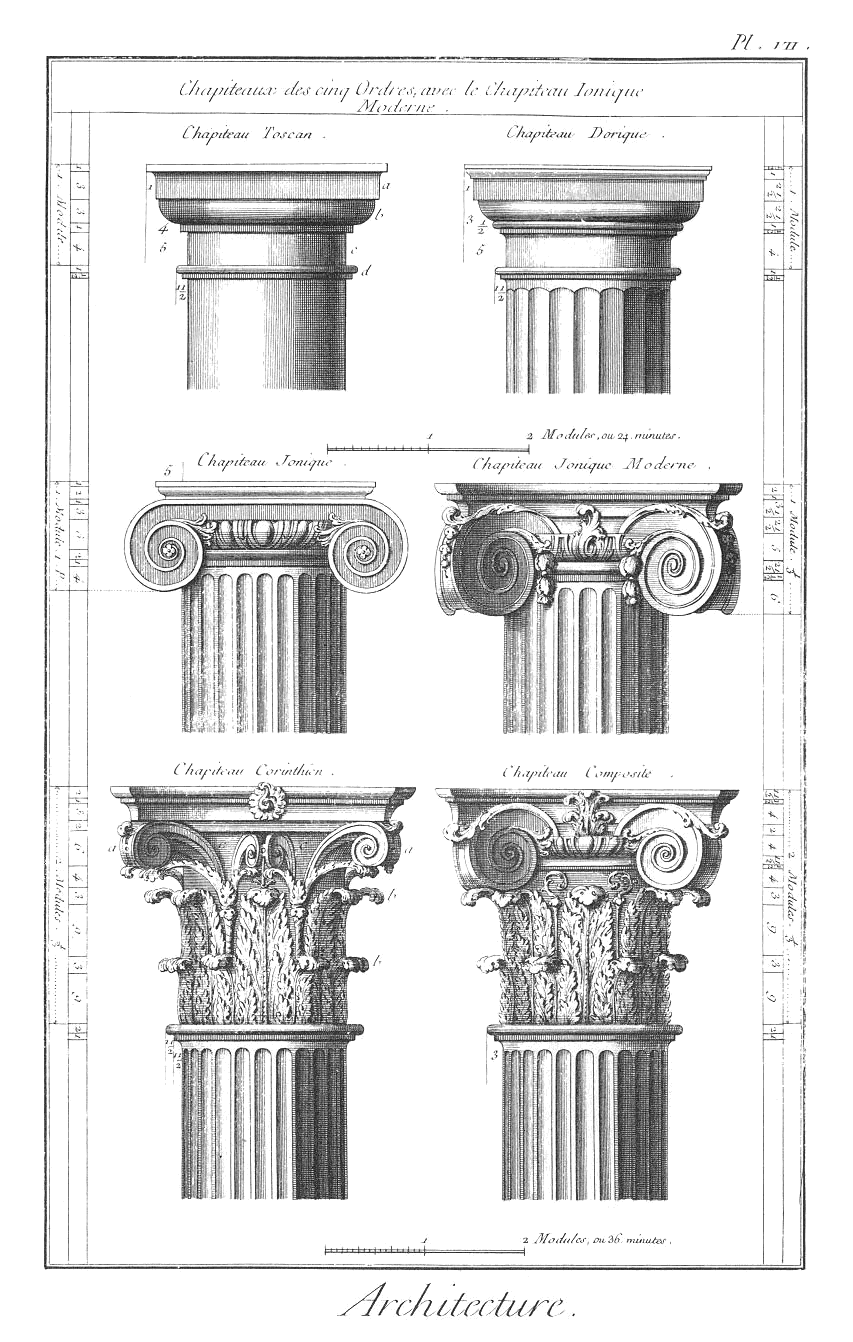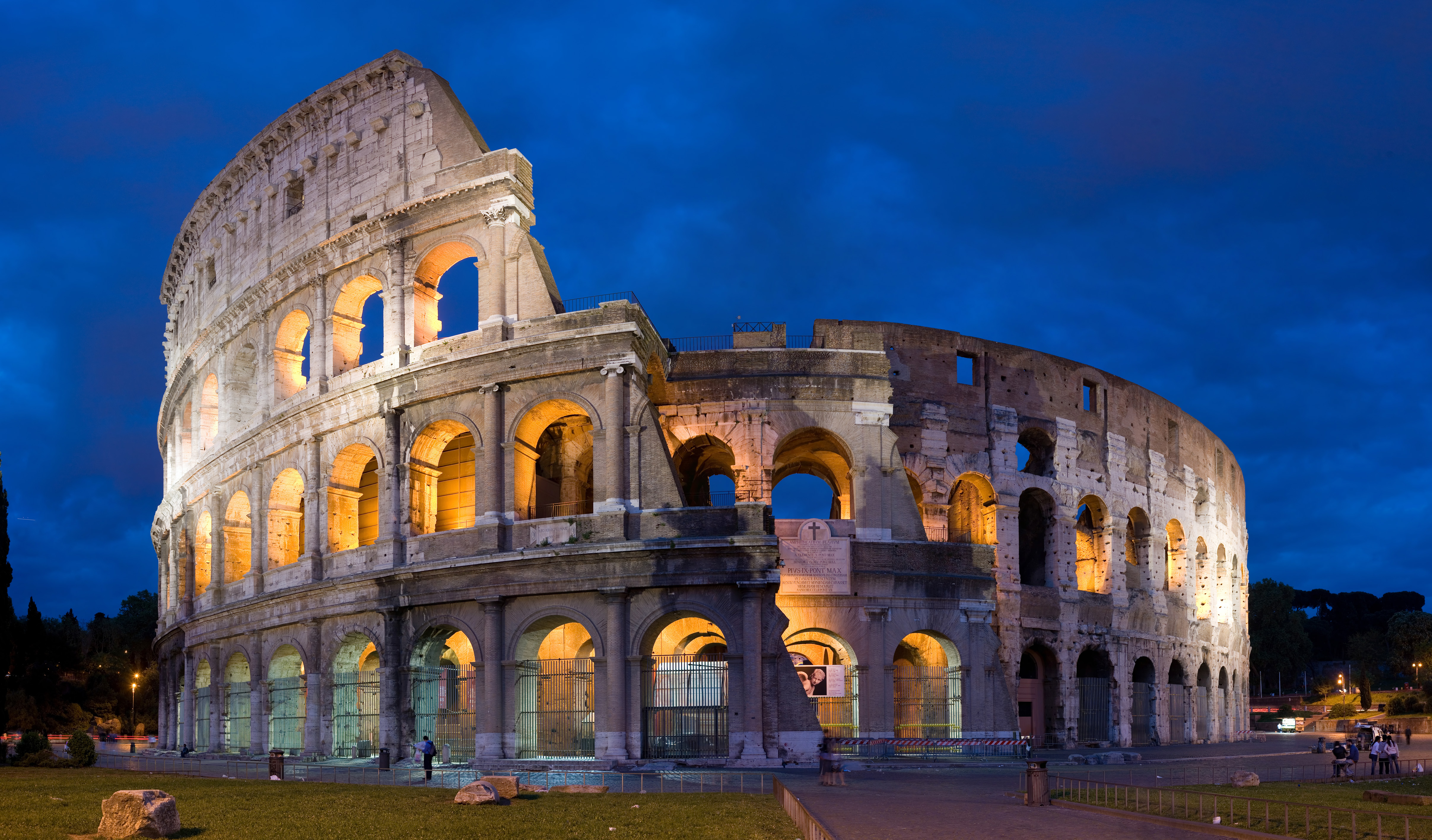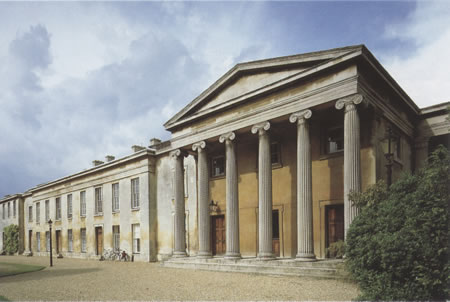Friday, August 28th, 2009
Intro to Architecture: Greek Capitals
 Someone requested that I write a few introductory posts on architecture, and I am more than happy to comply! I thought that it would be fun to start with the architectural orders that were popular in ancient Greece. (I thought about waiting to write this post until I reached this same chronological point in my intro/survey posts, but I’m too excited to wait. So, sorry for the anachronism. Just pretend that the architectural posts are separate from the other survey posts.)
Someone requested that I write a few introductory posts on architecture, and I am more than happy to comply! I thought that it would be fun to start with the architectural orders that were popular in ancient Greece. (I thought about waiting to write this post until I reached this same chronological point in my intro/survey posts, but I’m too excited to wait. So, sorry for the anachronism. Just pretend that the architectural posts are separate from the other survey posts.)
 The three Greek architectural orders are called Doric, Ionic, and Corinthian. These orders are easily defined by a key characteristics, namely the capitals (decorative heads) at the tops of the columns. There are several other architectural features which define these three orders (and there also are variants within these orders, as you can see in the drawing on the right), but I don’t want to overwhelm anyone. For now, we’ll just focus on the capitals of these basic columns.
The three Greek architectural orders are called Doric, Ionic, and Corinthian. These orders are easily defined by a key characteristics, namely the capitals (decorative heads) at the tops of the columns. There are several other architectural features which define these three orders (and there also are variants within these orders, as you can see in the drawing on the right), but I don’t want to overwhelm anyone. For now, we’ll just focus on the capitals of these basic columns.
As you can see from the pictures above, the Doric capital essentially is split into two simple sections. In contrast, the Ionic capital is decorated with large volute scrolls and the ornate Corinthian capital is decorated with acanthus leaves and scrolls. If you want to see some other examples of these capitals (and some other awesome capitals in general), click here and here.
Throughout history, the Greek architectural style has been adopted and revived by many other cultures. The Romans quickly adopted the Greek architectural style (really, they borrowed tons of their artistic ideas from the Greeks), and the term “Classical style” can refer to either Greek or Roman art. However, Romans put a twist to Greek design by sometimes using a superimposed order on buildings which had more than one story – each of the successive stories are decorated with a different order (this is a deviation from the Greeks, who consistently would use one order throughout a whole building). For example, you can see a superimposed order on the outside of the Colosseum (Rome, 70-80 AD). The Doric order is on the bottom level, the Ionic is on the middle level, and the Corinthian is on the top:
 You can also see another drawing of the Colosseum orders here
You can also see another drawing of the Colosseum orders here(Note: the fourth level of the Colosseum also is decorated with Corinthian capitals – but these capitals are atop pilasters instead of columns).
The Greek/Classical style has been revived many other times throughout history. Due to the excavation/discovery of Pompeii in 1748, Europeans became enamored with the Classical style once again – which led to the popular Neoclassical movement. Neoclassical architecture can be seen all over America and Europe. In America, the classical style is often used for civic buildings (which makes sense, because the Founding Fathers took part in this Neoclassical revival – they were influenced by the ideal of the Roman Republic). Here are a couple of Neoclassical examples:
Note the large Ionic columns that decorate the porch
 Thomas Jefferson, Monticello, Charlottesville, Virginia (1770-1806)
Thomas Jefferson, Monticello, Charlottesville, Virginia (1770-1806)
Jefferson used Doric columns for the porch of his home
 Jacques-Germain Soufflot, the Panthéon (Ste.-Geneviève),
Jacques-Germain Soufflot, the Panthéon (Ste.-Geneviève),
Paris, 1755-1792
See the large Corinthian columns?
 Pergola, Historic Pioneer Square, Seattle (first built 1909)
Pergola, Historic Pioneer Square, Seattle (first built 1909)

I most recently saw some columns with doric capitals on St. Louis cathedral in New Orleans.
I love reading theories about the sources of the different orders. I think if I remember right the Corinthian came from a grave site and so was used in a memorial context…? Don't know if I'm remembering that right or not.
I think I know what you're talking about, heidenkind. Vitruvius wrote about the origin of the Corinthian capital in his treatise on architecture. He discusses how a basket was placed on the tomb of a young maiden, and an acanthus plant grew and intertwined itself with the basket. It's an interesting story/legend, and if anyone is interested, you can read the account here, on p. 213-215.
If you keep on reading after the excerpt, there are a couple of paragraphs which discuss the reception of Vitruvius' account. I think it's especially interesting that scholars have pinpointed the funerary significance of the acanthus plant, but these funerary origins come mainly from the Athens area (not Corinth). In fact, due to the sea climate, it is unlikely that acanthus ever grew in Corinth.
Finally! I read the posts!
I love your intro posts.
I'm wondering if the other Founding Fathers also used capitals on their homes. I've been trying to think back on my visits to Mt. Vernon and if there were any there.
That's an interesting question, e! It looks like George Washington had some variant of the Doric capital/column at Mount Vernon. You can see a picture here.
I knew I could count on you to know! By the way, thank you for the info on the artist that did the JFK bust and Einstein memorial. You are seriously my art consultant!
JVC, you are correct about the inter-related proportions in Greek architecture. Since I only focused on capitals in this post, I didn't mention proportions, the golden mean, etc. But I hope to discuss that in a later post. Stay tuned!